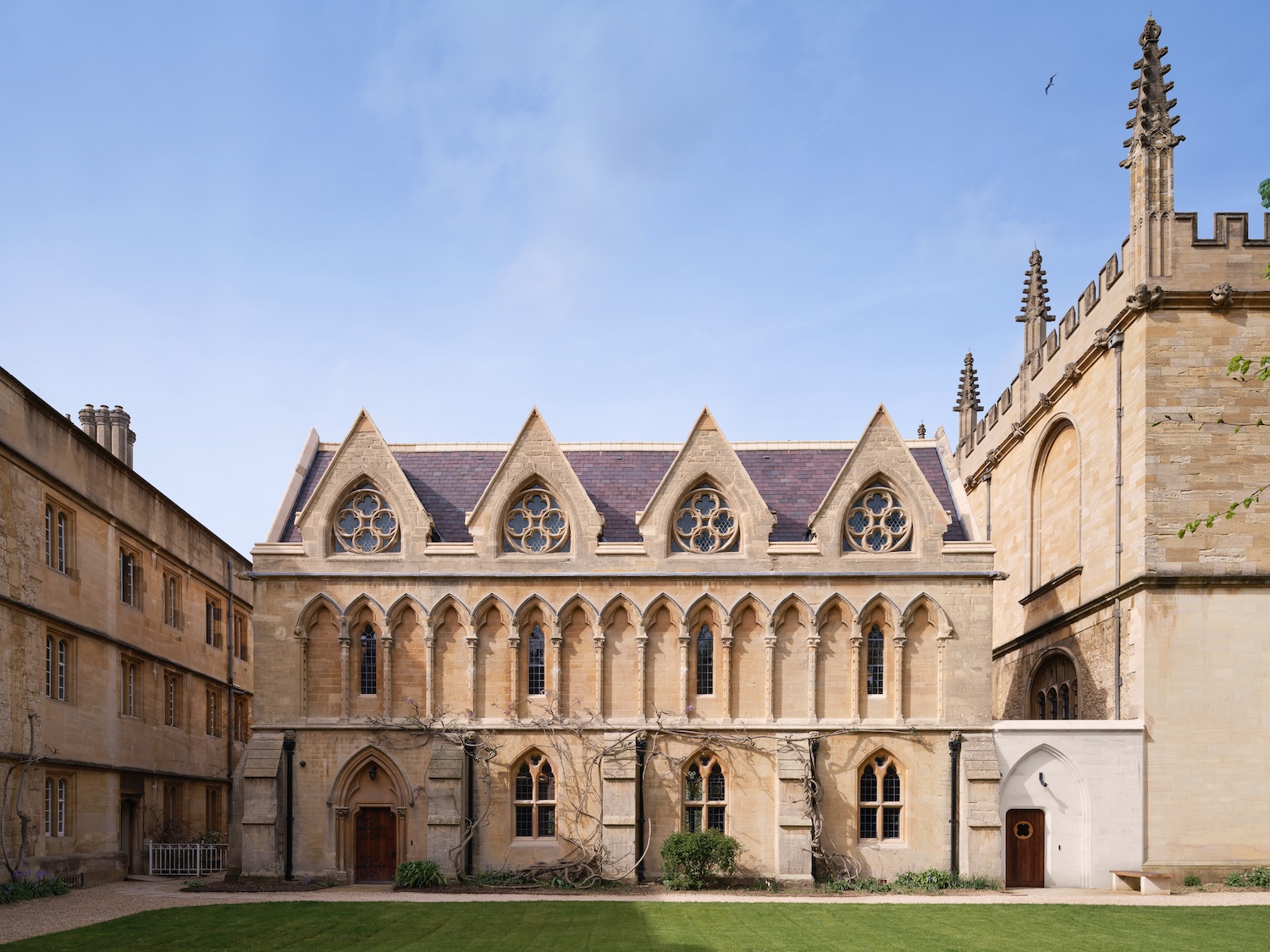At the University of Oxford, Nex— Architecture and Donald Insall Associates have refurbished the George Gilbert Scott-designed Exeter College Library, improving circulation and qualities of natural light, as well improving the building’s general performance.
Alan Dempsey of Nex— Architecture and Michele Verdi of Donald Insall Associates will be speaking about this project in detail at our upcoming webinar on sustainable heritage. Register for free, here.
Nex— and Donald Insall won a competition to refurbish the library with a joint bid four years ago in 2019. The site in question is one of the most historically sensitive in Oxford, with the library, originally designed by George Gilbert Scott in 1857, being surrounded by a series of listed buildings, namely the 17th century walls of Convocation House and the Grade I listed historic court room of the Bodleian Library.
The library itself, meanwhile, is Grade II listed and is arranged in an L-shape, overlooking Rector’s Garden. Nex— and Donald Insall were tasked with adding further study space for students as well as improving the building’s circulation, access and environmental performance – all while dealing with inheriting no pre-existing construction drawings for the scheme.
Donald Insall in particular oversaw repair work carried out to the building’s envelope, repairing ashlar walls, windows and roofs. Inside, the library’s historic bookcases were repaired as well.
In order to improve access to and circulation around the library, Nex— took the opportunity to reconfigure a ‘link block’, a space which after two centuries of alterations was being used as a garden store and strongroom, to create a new entrance to both wings of the library. To do this, a narrow sliver of space alongside the Bodleian’s buttressing was also used, while a new staircase and lift and lift have been inserted to make the library fully accessible for the first time in its history.
These new additions are hard to see externally, though the new lift shaft, tucked behind an existing stair turret, has used iron cladding, with this being in sync materially with Gilbert Scott’s original ironwork for the college chapel’s bell tower.
The iron-clad lift shaft can be spied neatly tucked away behind a pre-existing stair turret
The new entrance meanwhile, is framed by Clipsham stone – echoing the existing masonry and entry replaces an old door that led people right into the reading rooms, disrupting those studying, in turn incorporating a drought lobby as well as WC and locker facilities. (A secondary entrance at the north end of the annex, meanwhile, facilitates further movement through the building and provides an emergency exit). The library’s new main means of
Inside, new roof lights bring in further daylight to the library and frame new views onto the Bodleian. Further daylight is also brought in through new clerestory windows that allow non-direct light to softly illuminate the space below, with these windows replacing older rooflights which were added in the 1950s.
Steel beams added in the 19th century to reinforce the floor have also been removed and replaced, this time by a hidden structure that allows the original ceiling of the library to be fully visible.
Not hidden is new oak joinery that has been added throughout the library, being used for new desks, the stairway, mezzanine balustrades – and integrating new heating and lighting services as well as storage acoustic insulation.
Additional images and drawings
Source: Architecture Today

